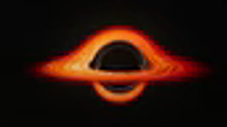THE LATEST
NASA supercomputer powers groundbreaking black hole visualization

A new NASA visualization created on a supercomputer allows viewers to take a virtual plunge into the event horizon of a supermassive black hole, with the potential to revolutionize our understanding of these enigmatic phenomena. The groundbreaking simulation, produced by astrophysicist Jeremy Schnittman at NASA’s Goddard Space Flight Center, offers an immersive experience of falling into a black hole and explains the complex principles of relativity in a visually engaging way.
The Power of Supercomputing and Collaborative Research
To achieve this level of cinematic fidelity, Schnittman worked alongside fellow scientist Brian Powell and harnessed the computational power of the Discover supercomputer at the NASA Center for Climate Simulation. The project consumed an impressive ten terabytes of data, equivalent to half of the text content in the Library of Congress. In just five days, they ran it on 0.3% of Discover's 129,000 processors, an accomplishment that would have taken years on a traditional laptop.
“People often ask about this, and simulating these difficult-to-imagine processes helps me connect the mathematics of relativity to actual consequences in the real universe,” Schnittman said. “So I simulated two different scenarios, one where a camera -- a stand-in for a daring astronaut -- just misses the event horizon and slingshots back out, and one where it crosses the boundary, sealing its fate.” This ambitious undertaking, with its potential for exciting discovery and innovative breakthroughs, required the input of experts from various fields working collaboratively.
Revolutionizing Our Understanding of Black Holes
The latest visualization offers a glimpse of a supermassive black hole, a monstrous entity weighing 4.3 million times the mass of our Sun, at the center of our galaxy, in an immersive experience. As the viewer takes a virtual trip, the glow from the accretion disk, photon rings, and the starry sky all become amplified, contributing to a more realistic portrayal of the experience of falling into a black hole.
“This is why astronomers originally referred to black holes as ‘frozen stars,’” Schnittman explained. “Once the camera crosses the horizon, its destruction by spaghettification is just 12.8 seconds away,” he added, referencing the process by which objects close to a black hole become elongated like spaghetti. The visualization both educates and entertains, making scientific principles more accessible to the general public.
A New Dawn of Discovery
By bringing scientific principles to life in an accessible and visually appealing way, the new visualization reveals the potential for groundbreaking discoveries, offering a glimpse into unexplored territories. With the power of supercomputing, the door opens to researching increasingly complex phenomena and understanding the mysteries of the universe beyond our field of view. The visualization underscores the potential for collaboration and innovative solutions to unlocking the doors of the cosmos.
The new NASA visualization uses collaboration to create compelling on-screen material that further lays the foundation for epic breakthroughs in astrophysics. As expert scientists continue to leverage advanced technologies and insights, the dawn of cosmic discovery continues to unfold.
